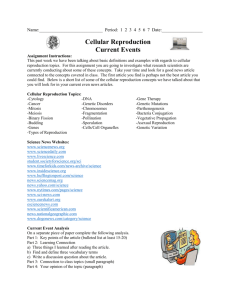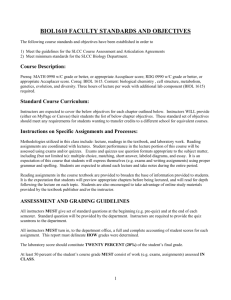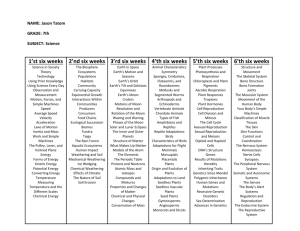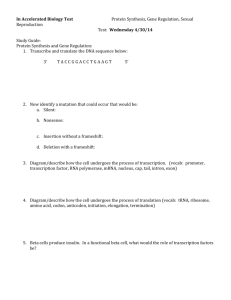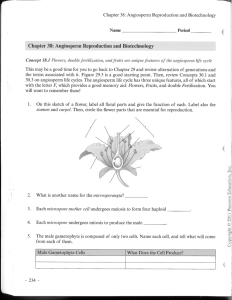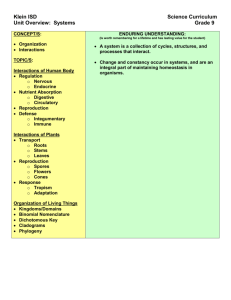BI101 - Mohawk Valley Community College
advertisement
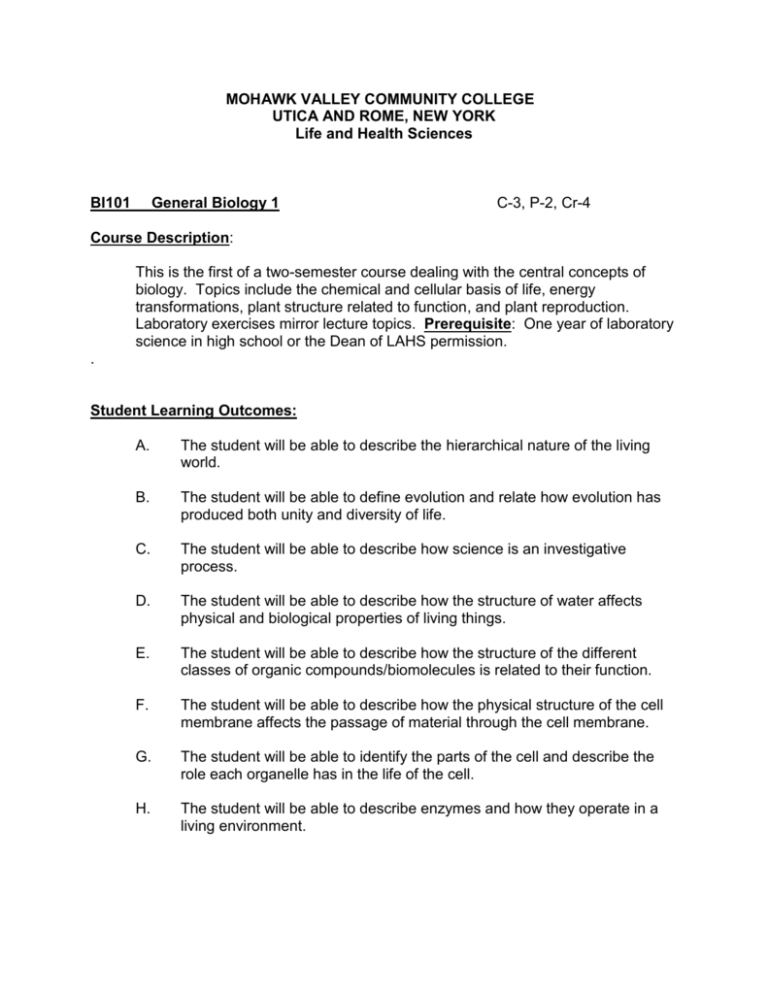
MOHAWK VALLEY COMMUNITY COLLEGE UTICA AND ROME, NEW YORK Life and Health Sciences BI101 General Biology 1 C-3, P-2, Cr-4 Course Description: This is the first of a two-semester course dealing with the central concepts of biology. Topics include the chemical and cellular basis of life, energy transformations, plant structure related to function, and plant reproduction. Laboratory exercises mirror lecture topics. Prerequisite: One year of laboratory science in high school or the Dean of LAHS permission. . Student Learning Outcomes: A. The student will be able to describe the hierarchical nature of the living world. B. The student will be able to define evolution and relate how evolution has produced both unity and diversity of life. C. The student will be able to describe how science is an investigative process. D. The student will be able to describe how the structure of water affects physical and biological properties of living things. E. The student will be able to describe how the structure of the different classes of organic compounds/biomolecules is related to their function. F. The student will be able to describe how the physical structure of the cell membrane affects the passage of material through the cell membrane. G. The student will be able to identify the parts of the cell and describe the role each organelle has in the life of the cell. H. The student will be able to describe enzymes and how they operate in a living environment. I. The student will assess how the laws of thermodynamics apply to living systems and be able to defend how the kinetic molecular theory is the basis for life's metabolic pathways. J. The student will be able to describe how the energy needed to combat entropy is harvested from the chemical bonds of glucose in the steps of glycolysis, the Kreb's cycle, and the electron transport chain. K. The student will be able to describe the metabolic pathways related to the photosynthetic production of glucose in plant cells. L. The student will be able to describe how the organization of angiosperm plant tissues is related to the functions of angiosperm plant organs. M. The student will differentiate between the different mechanisms seedless and seed land plants use to reproduce and how each reproductive strategy is related to the environment that the plant is found in. Laboratory Objectives A. The student will produce a taxonomic key and will use prepared taxonomic keys to identify selected living organisms. B. The student will be able to demonstrate how to use the compound microscope to focus on biological specimen, and will be able to distinguish between the different types of animal and plant. C. The student will construct examples of biological molecules to differentiate between the different classes of biomolecules. D. The student will demonstrate the skills of observation, data collection, and data analysis while investigating the processes of osmosis, enzyme catalysis, and cellular respiration. E. The student will write formal laboratory reports on the results of the above investigative laboratories. F. After extensive microscopic examination and the production of detailed drawings, the student will be able to explain how the structure of plant organs is related to their function. G. The student will be able to relate the processes of mitosis and meiosis to plant reproductive patterns. Major Topics – Lecture: 1. A View of Life 2. Atoms and Molecules: The Chemical Basis of Life 3. The Chemistry of Life: Organic Compounds 4. Biological Membranes 5. Organization of the Cell 6. Energy and Metabolism 7. How Cells Make ATP: Energy Releasing Pathways 8. Plant Structure, Growth, and Differentiation 9. Leaf Structure and Function 10. Stems and Plant Transport 11. Photosynthesis: Capturing Energy 12. The Plant Kingdom: Seedless Plants 13. The Plant Kingdom: Seed Plants Major Topics - Laboratory 1. Taxonomic Keys 2. Compound Microscope 3. Animal Tissues (two week exercise) 4. Introduction to Organic Molecules 5. Membranes - Diffusion/Osmosis 6. Enzyme Catalysis 7. Plant Anatomy I 8. Plant Anatomy II 9. Cellular Respiration 10. Mitosis 11. Meiosis 12. Plant Reproduction I 13. Plant Reproduction II Reviewed by Professor Richard Thomas 2/11/2013
